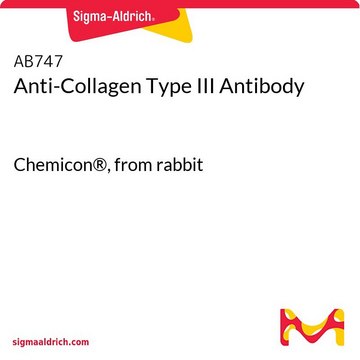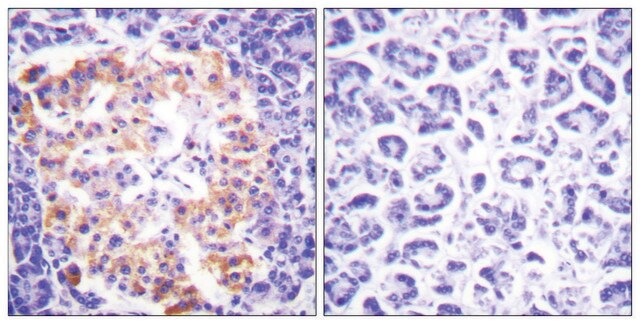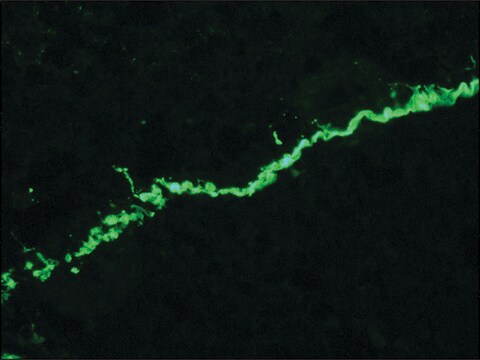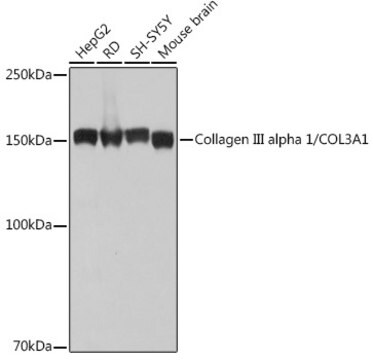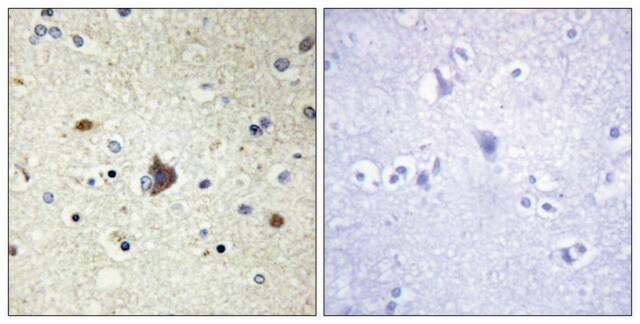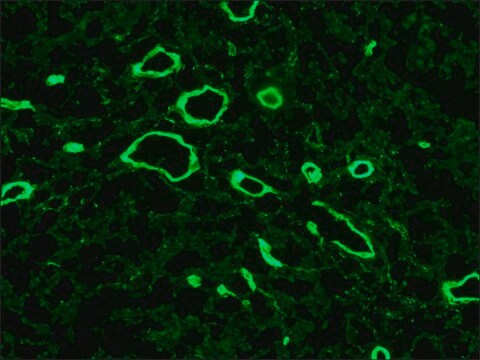SAB4200749
Anti-Collagen Type III antibody, Mouse monoclonal
clone FH-7A, purified from hybridoma cell culture
Synonyme(s) :
Anti-COL3A1, Anti-Collagen alpha-1(III) chain
About This Item
Produits recommandés
Source biologique
mouse
Niveau de qualité
Forme d'anticorps
purified from hybridoma cell culture
Type de produit anticorps
primary antibodies
Clone
FH-7A, monoclonal
Forme
buffered aqueous solution
Poids mol.
~70 kDa
Espèces réactives
rat, human
Concentration
~1.0 mg/mL
Technique(s)
ELISA: suitable
immunoblotting: suitable
immunofluorescence: suitable
immunohistochemistry: 10-20 μg/mL using heat-retrieved formalin-fixed, paraffin-embedded rat skin sections.
Isotype
IgG1
Numéro d'accès UniProt
Conditions d'expédition
dry ice
Température de stockage
−20°C
Modification post-traductionnelle de la cible
unmodified
Informations sur le gène
human ... COL3A1(1281)
Description générale
Monoclonal anti-collagen type III specifically recognizes native and denatured collagen type III from human 1 and rat 2 origin. It does not recognize collagen types I, II, IV, V, VI and X.
Collagen type III, also known as collagen α-1(III) (COL3A1), is encoded by the gene mapped to human chromosome 2q24.3-q31. It is the highly expressed collagen in blood vessels and hollow organs.
Immunogène
Actions biochimiques/physiologiques
Forme physique
Stockage et stabilité
Autres remarques
Vous ne trouvez pas le bon produit ?
Essayez notre Outil de sélection de produits.
En option
Code de la classe de stockage
12 - Non Combustible Liquids
Classe de danger pour l'eau (WGK)
nwg
Point d'éclair (°F)
Not applicable
Point d'éclair (°C)
Not applicable
Certificats d'analyse (COA)
Recherchez un Certificats d'analyse (COA) en saisissant le numéro de lot du produit. Les numéros de lot figurent sur l'étiquette du produit après les mots "Lot" ou "Batch".
Déjà en possession de ce produit ?
Retrouvez la documentation relative aux produits que vous avez récemment achetés dans la Bibliothèque de documents.
Notre équipe de scientifiques dispose d'une expérience dans tous les secteurs de la recherche, notamment en sciences de la vie, science des matériaux, synthèse chimique, chromatographie, analyse et dans de nombreux autres domaines..
Contacter notre Service technique
